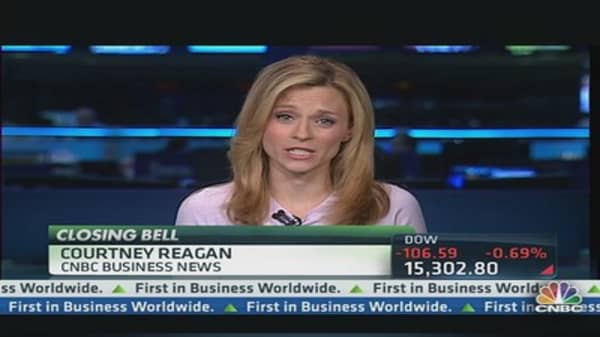But Wells Fargo retail analyst Paul Lejuez isn't giving up on Abercrombie & Fitch yet. In a note to clients, Lejuez notes both positives and negatives for the retailer, but says ultimately "when we weigh the good with the bad, we still come out positive on ANF's risk/reward."
Aeropostale also landed on both gender's lists as a brand that's is no longer worn, Piper Jaffray said. The brand was No. 1 on the list for females and No. 2 for males. This is especially discouraging for the retailer because there's a high rate of correlation between spring and back-to-school shopping. Aeropostale has increased its promotions to clear merchandise, but neither the prices nor the fashion is resonating. Of the 25 analysts Thomson Reuters surveyed with Aeropostale coverage, 14 have "hold" ratings on the stock.
Over at American Eagle, it is a different story. The brand is resonating with teens, but it's disappointing investors. Piper Jaffray's survey ranked the retailer as the second favorite clothing brand for average-income teens, and the third favorite brand for upper-income teens. Still, the retailer has some work to do to close the gap between consumer preference and its financial results. The retailer's first-quarter earnings fell more than 18 percent and net sales fell 4.1 percent over first-quarter 2012. Shares have fallen 5 percent so far in 2013 compared to the S&P Retail Index's 21-percent gain over the same time period.
There are still analysts who are willing to give American Eagle the benefit of the doubt. UBS analyst Roxanne Meyer wrote: "our view of AEO's product remains positive and comps have improved since April; second-quarter outlook seems conservative."
(Read More: Down, But Not Out: JC Penney CEO Meets Shareholders)
Although Jefferies' Randal Konik has a "hold" on shares, he has a positive outlook on American Eagle. "Last year American Eagle had strong momentum and significant market share gains. We believe trends have somewhat stabilized early in 2Q." Konik also said he expects AEO management has made positive strides when it comes to streamlining operations, improving the product and marketing.
While it's not traditionally thought of as a "teen" brand, Nike again takes top honors as the top clothing brand preference for both genders in both the average and upper income groups, Piper Jaffray said. Nike has been the No. 1 most preferred clothing brand for the upper-income teen for the last five consecutive surveys. For the average-income teen, Nike has been No. 1 in the last three of four surveys. Action-sport retailers like Dick's Sporting Goods are just one beneficiary of the Nike craze, as 17 percent of the retailer's sales are Nike products.
Urban Outfitters, which operates brands such as Anthropologie, Free People, BHLDN and Terrain, is a specialty retailer that's been making strides with investors and consumers. It may not typically be considered a core teen retailer, but perhaps it should be. Piper Jaffray notes Urban Outfitters is "focused on an older customer, but a perennial top ten" for teens, particularly for the upper-income teen group. The specialty retailer is a name praised by analysts for its so-called omnichannel success, which refers to its ability to integrate its digital and traditional retailer offerings.
KeyBanc analyst Ed Yruma said Urban Outfitter's direct-to-consumer sales (online and catalog) are the key growth driver in the near-term, while UBS' Meyer cites the retailer's direct-to-consumer business and its omnichannel platform along with new stores and product expansion as the keys to its future success.
Fast-fashion teen retailer Forever 21 is the third favorite clothing brand among teens in the Piper Jaffray survey. While the retailer is private, it's rising popularity shouldn't be ignored. The retailer now has 450 stores in the United States as well as an international presence with locations in Europe and China. Bank of America estimates Forever 21 has sales upwards of $3.5 billion, which is larger than Aeropostale's annual revenue, slightly smaller than Abercrombie, but about equal American Eagle's annual sales. Forever 21 is known for its huge selection and inventory and low prices, both traits that make a difference competitively.
Beyond keeping up with changing fashion preferences, retailers have had to plow resources into amping up online offerings. Spring 2012 was the first in Piper Jaffray's survey history where the respondents that said they preferred to shop online or at outlets outpaced those who shop at specialty retailers. The preference for those channels has increased ever since. If you think older consumers expect a seamless shopping experience between online, mobile and brick-and-mortar retail, just imagine a teen's impatience if a retailer's website or app doesn't deliver.





